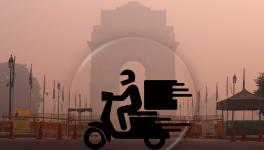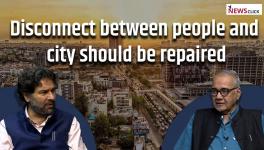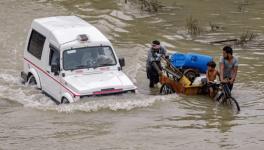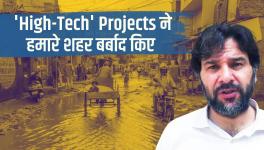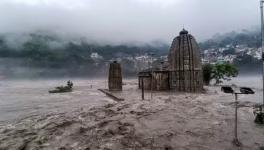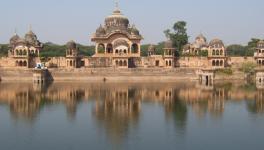Why Flooded Cities Are Becoming Common These Days
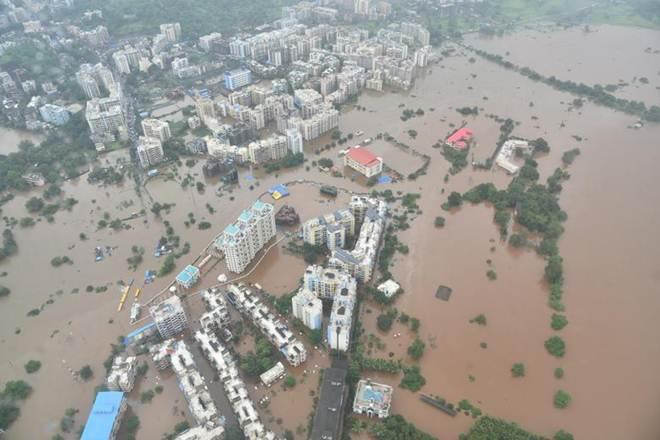
Image Courtesy: Financial Express
Geetha, 21, held her one-and-a-half-year-old son, Dhruman, close to her, trying to save their lives from the rising waters, but in vain. When their bodies were discovered in Mallapuram district in Kerala, Geetha was holding on to her son tightly. Two sisters, Anagha and Aleena, who hugged each other every night before going to sleep, were buried together in a massive landslide in Nilambur town in Kerala. Similar heart-rending incidents of loved ones lost in the recent floods in the country have been reported.
Just in three states -- Maharashtra, Kerala and Karnataka -- 227 people have died in the floods and landslides and the number is expected to rise as there are a large number of missing persons. More than 350 deaths have been reported from across the country, including in Assam, Himachal Pradesh, Bihar and Punjab. Over two lakh displaced people had to be shifted to because of inundation.
The economic loss is also colossal. It is estimated that every year there is a loss of over 3% of GDP (gross domestic product) due to floods. The Central Water Commission has estimated that from 1957 to 2017, a total of 1,07,457 people have died in floods and nearly Rs 3,68,868 crore loss of infrastructure has taken place owing to loss of houses, roads, bridges etc. In Maharashtra alone, the loss has been estimated at Rs 50,000 crore in the past two months. These losses include damage to property, loss of animals, dairy business and crops.
Flooded Cities
A large number of the cities have also gone under water. In fact, urban flooding is mainly due to poor drainage and faulty urban planning. The United Nations Environment Programme terms the flooding of cities as artificial and not natural. By artificial, it means that floods in cities happen because of the way infrastructure is designed in the cities, occupying the land mass and leaving little space for water sequestration, badly designed and constructed stormwater drains, which instead of collecting the storm water, spill it out on the roads and localities. Not to miss the absence of rainwater harvesting in the cities, which also leads to flooding.
Let us take the example of Delhi. There were 611 natural water bodies in the city, which were responsible for collecting rainwater and acted like reservoirs. Not just that, these were also able to maintain the ecological balance of the region. Out of the 611 water bodies, 190 are completely lost; either occupied by real estate or converted into parks. As many as 274 water bodies have dried up. There are various reasons for this. Either the water channels leading to these bodies have been infringed upon or there may be blockage in the drains that led water to these bodies. Interestingly, Delhi gets 580 million cubic litres of rainfall in the monsoon, of which nearly 300 million cubic litre gets drained off, creating flooding in the city.
Just a cursory look at three decades of old satellite maps of India’s capital city is enough to show how its water channels have been blocked. Gurgaon, which is in Haryana, but is part of the National Capital Region, is an interesting example of this. In Gurgaon, the water channels that led rainwater to two major lakes have completely been blocked. Recollect the shooting of a television serial, Fauji, which led to the projection of Shah Rukh Khan as an actor. The lake around which the shoots were done and in which he had nearly drowned, were not completely dry then.
With the construction of flyovers, housing projects and the Metro, the natural channels of water have been blocked, leading to massive flooding in Gurgaon, which houses many residential high-rises and office complexes. It is a living example of a city being built without a master plan. The city was developed initially by a private developer and then the master plan was created. Delhi, at least, has a master plan which is getting updated this year.
Project-Based Approach
After the 1990s, the initiatives of successive governments have been to achieve the desired growth in cities by developing projects instead of a policy shift in development, which should have been to integrate many agencies working on the ground. JNNURM (Jawahar Lal Nehru National Urban Renewal Mission), RAY (Rajeev Awas Yojana) followed by the SCM (Smart City Mission), AMRUT (Atal Mission for Rejuvenation and Urban Transformation) etc., speak speak the same language of project-driven urbanisation.
The new Andhra Pradesh capital in Amravati is another disaster in the offing, as urban experts’ term it. The capital is being constructed on low-lying areas where there are a large number of water bodies. Amravati will be the future Chennai, they say, and this was proved recently when, as reported in the press, water entered the compound of the former chief minister Chandrababu Naidu’s residence.
Multiplicity of Agencies
Urban flooding is not just a problem of planning but also of multiplicity of urban governance agencies. Each city has a different governance structure. Some smaller cities are left to manage garbage, and infrastructure projects are done by some state government-run parastatals. Whereas in some other cities, there are many tiers of ownership and governance with regard to infrastructure. Take, for example, Delhi. Rainwater dropping from the top of a Metro track, owned by the Delhi Metro Rail Corporation (a 50:50 joint venture between the Delhi government and the Union urban development ministry), falls on the road, is taken care of by the Delhi government and eventually enters the stormwater drains managed by the municipal corporation. None speaks to each other. In many places one finds that the water from the Metro tracks does not fall through drain pipes, rather falls directly on the road and damages it. A simple way of integration could have been to harvest the rainwater directly from the Metro track and use it suitably. But without integration of governance, such a system cannot evolve.
Another major problem is related to construction of stormwater drains. Take the example of Shimla, a hill city. In the British era, stormwater drains were constructed with embankments of stone. This was done to ensure that water does not gush into the drain and percolates slowly to avoid flooding and also to recharge a large number of water springs in the vicinity. Recently, the Asian Development Bank funded a ‘beautiful city’ project in Shimla. The worst that could have happened in the beautification plan is the covering of storm water drains with concrete and porcelain.
This has made the main Mall Road cleaner, but at the cost of increasing the velocity of water in the larger drains, which causes flooding. Similarly, in the ‘level’ cities, the best method of constructing a drain is to concretise it, which then gets filled with muck and the water, instead of moving ahead, spills over on the roads and various localities. In Delhi, there are a large number of examples of such construction of drains.
What is to be Done?
Suptendu Biswas, an urban planner, points out that exactly 50 years ago, a book titled, Design With Nature, authored by Ian McHarg, was published, which emphasised on multifunctional landscape design paradigms. It focuses on natural, social and cultural processes and sees design as an iterative process that is shaped by interactions between humans and ecosystems. Biswas says that the planners have forgotten the essence of this approach of bringing the community and the diverse aspects of the landscape planning together.
Urban planning has become a mechanical process, which is extremely dangerous. John Closs, the former executive director of UN Habitat III, has said several times that we have to go back to the basics of planning and need to get rid of the laissez faire, i.e., the market will dominate the planning process.
The role of the State in guaranteeing ample number of planners to the field cannot be ruled out. Romi Khosla, a well-known city planner, says it is known that there is a shortage of planners and architects in cities, especially in smaller towns. He suggests a national service by the pass-outs from the planning and architecture colleges. For at least one year, as part of the internship programme, they should be sent to smaller towns to prepare their land use and infrastructure plans. This will be a win-win situation for both the cities and the students. The interface will help students understand the basics of planning better.
There are also examples of the citizens partnerships. One such example is the passion in which one million (10 lakh) wells are being dug in Bangalore by the traditional communities of the region. These wells are in the backyard of the houses, which will be filled with rainwater. This shall serve a twin purpose -- using the rainwater effectively and reducing flooding of streets.
Another example is the five kilometres stretch of nullah converted into a cleaner water stream and a walking space in Gurgaon. The technology is simple; it uses the storm water to recharge the nullah and the earlier sewer water flowing in to the nullah has been blocked and treated. The place has now become a walker’s paradise.
There are several such initiatives by citizen groups, but these are insufficient to meet the scale that we are talking about. That scale can only be filled by effective integration of planning, execution, governance, transparency and accountability. And, it is the State that needs to act on it.
The writer is former Deputy Mayor of Shimla, Himachal Pradesh. The views are personal.
Get the latest reports & analysis with people's perspective on Protests, movements & deep analytical videos, discussions of the current affairs in your Telegram app. Subscribe to NewsClick's Telegram channel & get Real-Time updates on stories, as they get published on our website.










